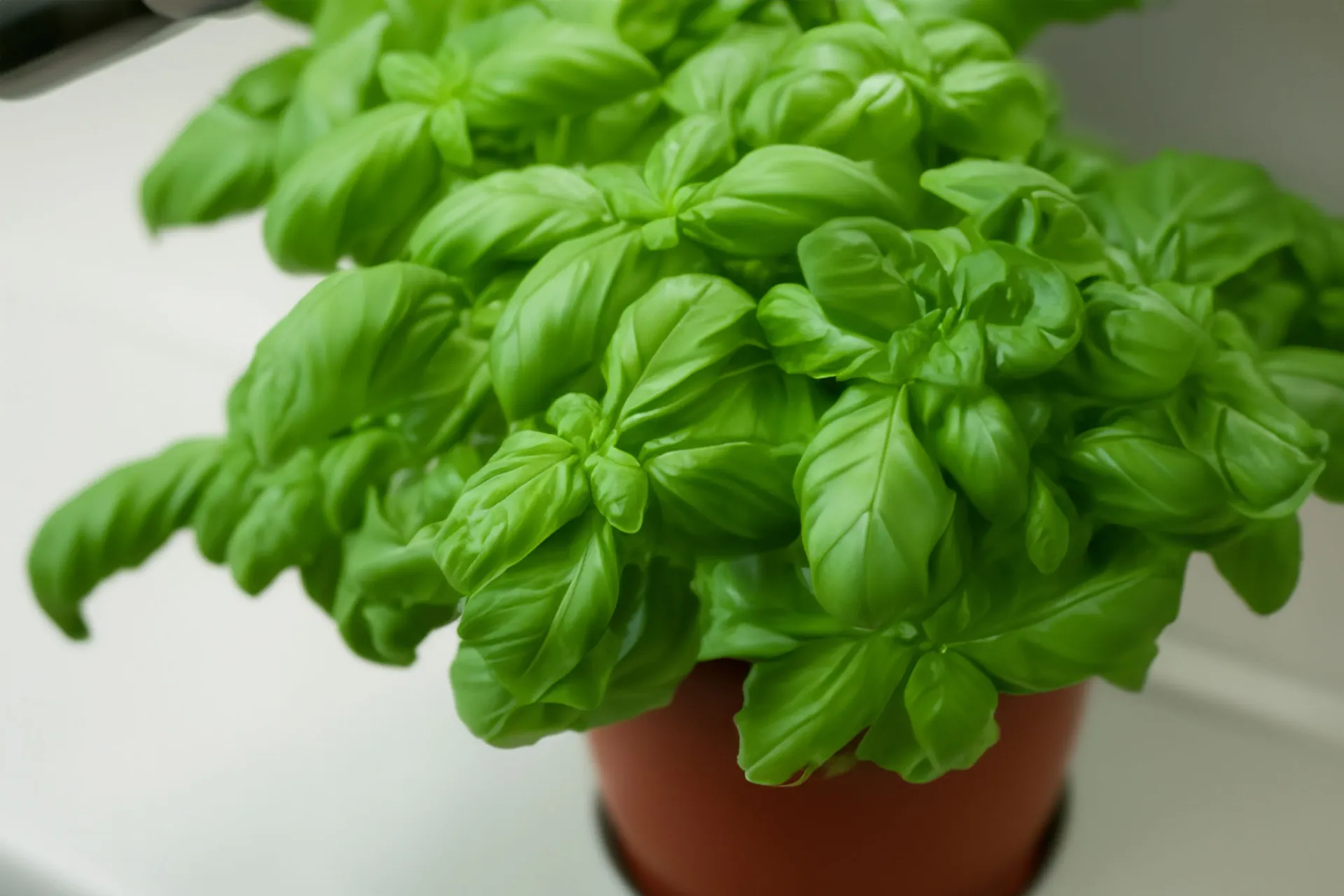This post may contain affiliate links. When you purchase through links on my site, I may earn a commission at no cost to you. See my Privacy Policy for details.
Basil, a beloved herb known for its aromatic leaves and versatile culinary uses, has become a staple in kitchens and gardens worldwide. Its vibrant green leaves and distinct flavor profile make it a favorite among chefs and home cooks. From the classic sweetness of Sweet Basil to the exotic notes of Thai Basil, each type brings its distinct flavor profile to the table.
Growing basil at home offers numerous benefits. Not only do you get a fresh supply of this wonderful herb, but it’s also a rewarding and straightforward gardening project. Even if you’re new to gardening, basil’s resilience and ease of care make it an excellent choice. We will explore the essential aspects of growing basil, from understanding its varieties to mastering planting and care techniques.
Understanding Basil
Types of Basil
Basil comes in various types, each with unique flavors and uses. The most common variety is sweet basil, known for its sweet, peppery flavor, making it perfect for Italian dishes. Thai basil, with its anise-like flavor, is a staple in Southeast Asian cuisine. Lemon basil and lime basil add citrusy notes, while purple basil offers a slightly spicier taste and adds color to your dishes. Exploring different basil types can elevate your cooking and provide a delightful variety in your herb garden.
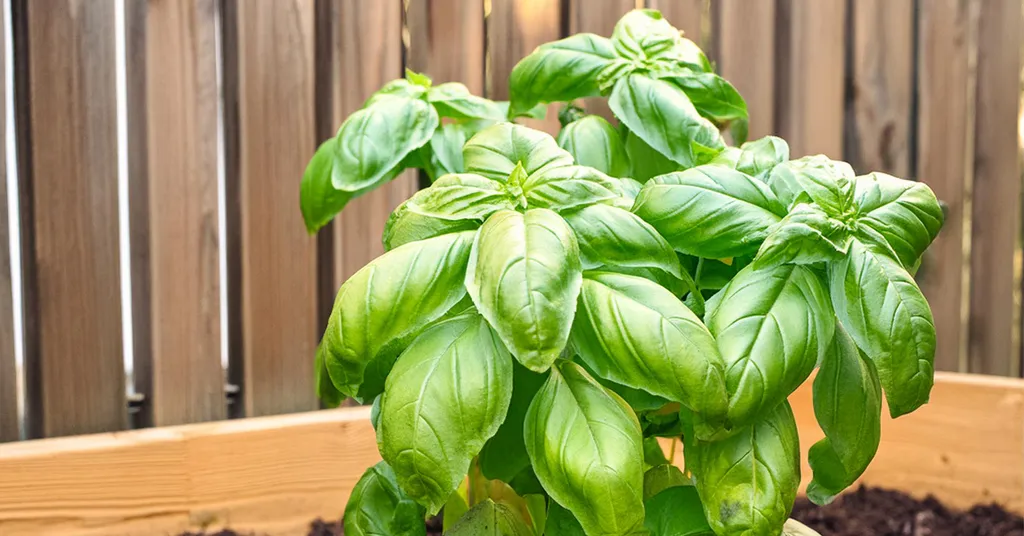
Sweet Basil
One of the most popular varieties of basil is Sweet Basil, known for its classic aroma and flavor that pairs perfectly with a wide range of dishes. Its large, bright green leaves are a staple in Italian cuisine, adding a fresh and aromatic touch to pasta sauces, salads, and pestos. Sweet Basil is easy to grow both indoors and in pots, making it a versatile herb to have on hand for cooking.
Thai Basil
Thai Basil, also known as Holy Basil or Ocimum tenuiflorum, is a unique variety of basil with a spicy, licorice-like flavor with hints of clove. This distinct herb is commonly used in Thai, Vietnamese, and other Southeast Asian cuisines to add a punch of flavor to dishes like curries, stir-fries, and soups. Thai Basil has smaller, pointed leaves compared to Sweet Basil, and its purple stems and flowers make it a visually striking addition to any garden.
Lemon Basil
Lemon Basil, also known as Ocimum citriodorum, is a delightful variety of basil that imparts a subtle lemony flavor to dishes. This herb is a wonderful addition to salads, seafood dishes, and even desserts, providing a refreshing citrus twist that brightens up the overall flavor profile. Lemon Basil features light green leaves with a hint of purple on its stems, making it not only a flavorful herb but also an attractive one in your garden.
Purple Basil
Purple Basil, also known as Dark Opal Basil, is a striking variety of basil with deep purple leaves that add a bold pop of color to your garden and dishes. This visually appealing herb not only enhances the aesthetic appeal of your culinary creations but also offers a mild, sweet flavor with hints of clove and mint. Purple Basil is a versatile herb that can be used in salads, pasta dishes, garnishes, and even infused in oils and vinegar for a unique twist.
Cinnamon Basil
Cinnamon Basil, also known as Mexican Spice Basil, is a delightful variety that adds a warm and spicy flavor to your culinary creations. With its unique taste reminiscent of cinnamon and cloves, this aromatic herb brings a distinct twist to your dishes. Cinnamon Basil pairs well with tomatoes, peppers, and Asian-inspired dishes, adding a flavorful kick to stir-fries, soups, and salads. Its rich aroma and bold taste make it a standout herb in both savory and sweet recipes. Embrace the versatility of Cinnamon Basil and elevate your cooking with its delightful warmth and spice.
Nutritional Benefits
Basil isn’t just flavorful; it’s also packed with nutrients. It’s a good source of vitamins A, C, and K, as well as essential minerals like calcium, magnesium, and iron. Basil’s anti-inflammatory properties and high antioxidant content can contribute to overall health, potentially reducing the risk of certain chronic diseases. Including fresh basil in your diet can support your immune system, promote healthy skin, and aid in digestion.
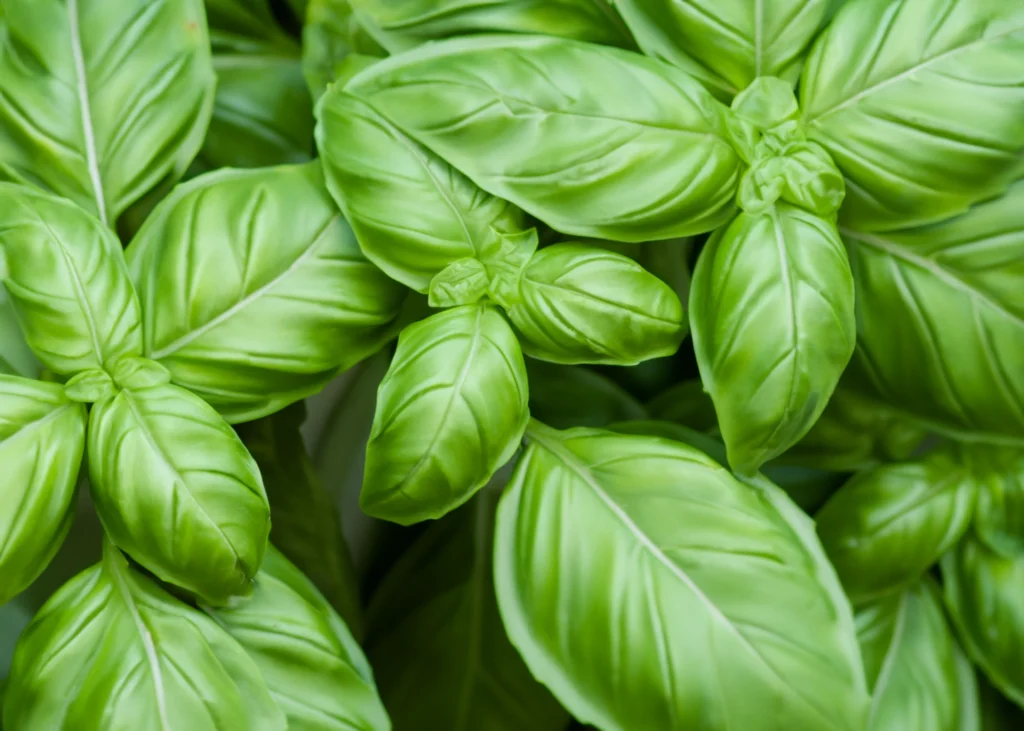
Growing Basil
Growing basil is a rewarding experience that can bring a burst of flavor to your dishes. Whether you choose to grow Sweet Basil, Thai Basil, Lemon Basil, Purple Basil, or Cinnamon Basil, the process of nurturing these herbs remains relatively similar. From providing ample sunlight and water to monitoring for pests and diseases, growing basil requires attention to detail and patience.
Planting Basil
Choosing the Right Location
Basil thrives in warm, sunny locations with at least six hours of direct sunlight daily. Choose a spot in your garden or a sunny windowsill if you’re growing basil indoors. Ensure the area is sheltered from strong winds and has good air circulation to prevent disease. Proper light and air conditions are critical for basil’s growth and flavor development.
Preparing the Soil
Basil prefers well-drained soil rich in organic matter. Before planting, amend your soil with compost or well-rotted manure to improve its fertility and structure. Basil grows best in slightly acidic to neutral soil (pH 6.0-7.0). Test your soil’s pH and adjust if necessary using garden lime or sulfur. Good soil preparation ensures your basil plants have the nutrients and structure needed to thrive.
Planting Seeds vs. Transplants
Deciding whether to start with seeds or transplants depends on your preference and growing conditions. Starting from seeds is cost-effective and offers a wide variety of basil types. Sow seeds indoors 6-8 weeks before the last frost date, then transplant seedlings outdoors. Alternatively, buy young basil plants from a nursery for a quicker start. Transplants are convenient and ensure a head start on the growing season. Whichever method you choose, space plants 12-18 inches apart to allow for healthy growth and airflow.
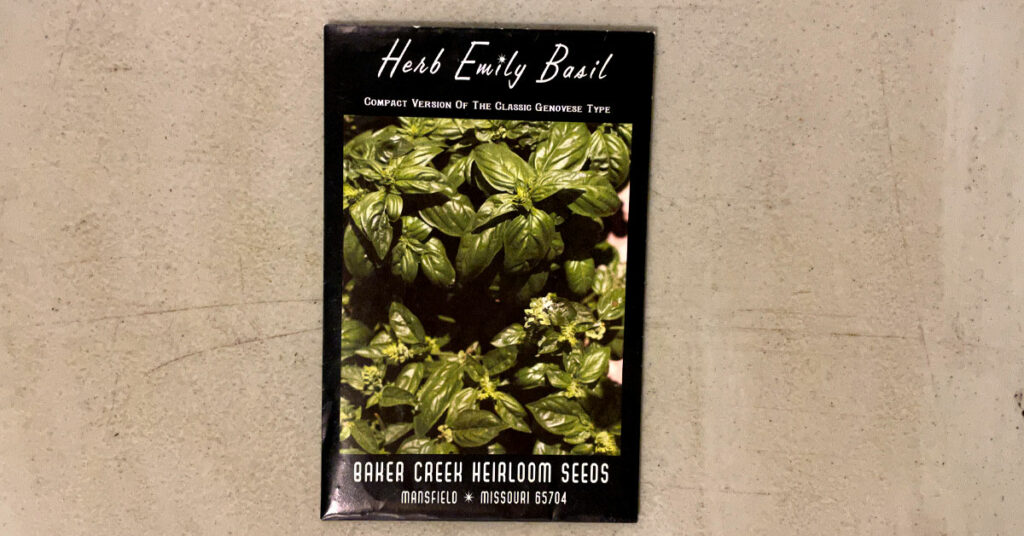
Growing Basil From Cuttings
Growing Basil from cuttings is another method to propagate this versatile herb, providing a quicker way to establish new plants. To start, select a healthy basil plant with strong stems and vibrant leaves. Using sharp scissors or pruners, cut a 4-6 inch stem from the parent plant, making the cut just below a node where leaves meet the stem. Remove the lower leaves from the cutting, leaving just a few at the top to promote growth. Place the cutting in a glass of water or propagation stand, making sure the stem is submerged but the leaves are above the water line. Change the water every few days to prevent bacteria buildup. After 1-2 weeks, roots should begin to form. Once the roots are about 2 inches long, transfer the cutting to a small pot filled with well-draining soil to continue growing.
This method of propagation is a great way to expand your basil garden quickly and easily, especially if you have a favorite basil variety you want to duplicate. Growing Basil from cuttings can be a convenient way to ensure a bountiful harvest for your kitchen creations. Transitioning from propagating basil plants with cuttings, growing basil indoors is another practical way to enjoy fresh basil year-round.
Growing Basil Indoors
Growing basil indoors is a great option for those who want to have fresh basil on hand throughout the year. By placing potted basil plants near a sunny window or under a grow light, you can continue to enjoy the flavorful leaves even during the colder months. Just be sure to water the plants regularly and provide them with adequate sunlight to thrive.
Growing Basil in Pots
For those looking to expand their herb garden without the constraints of outdoor space, growing basil in pots is an excellent option. Potted basil plants can be placed on a sunny patio, balcony, or even inside near a bright window, allowing for easy access to fresh herbs right at your fingertips. When planting basil in pots, it’s important to choose a container with good drainage to prevent waterlogged roots. Additionally, be sure to use nutrient-rich soil and water the plants consistently to keep them healthy and thriving. With the right care, growing basil in pots can be a convenient and rewarding way to enjoy this versatile herb.
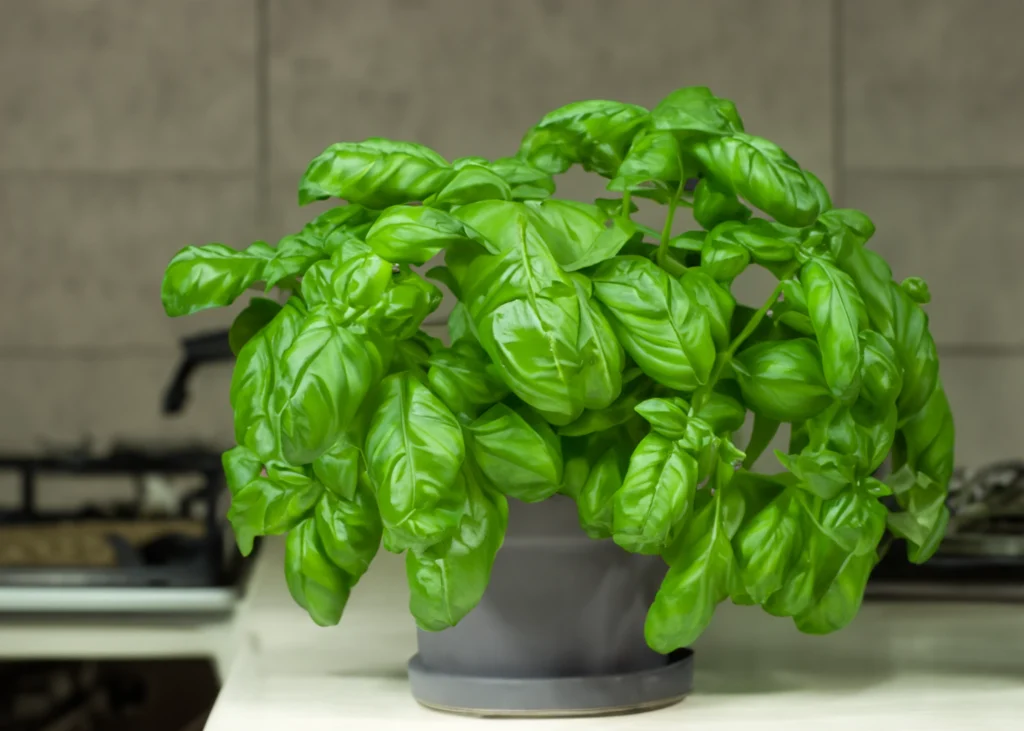
Caring for Basil
Watering Needs
Basil requires consistent moisture, but overwatering can lead to root rot. Water your basil plants deeply, ensuring the soil remains moist but not waterlogged. In hot weather, you might need to water more frequently. Mulching around the plants can help retain soil moisture and regulate temperature. Always water at the base of the plant to keep the leaves dry, reducing the risk of fungal diseases.
Pruning and Harvesting
Regular pruning encourages bushier growth and prevents basil from becoming leggy. Pinch off the top sets of leaves regularly, starting from when the plant is about 6 inches tall. This practice promotes lateral branching and a fuller plant. Harvest basil leaves in the morning for the best flavor, before the sun gets too hot. Use sharp scissors or your fingers to snip leaves just above a pair of leaves or leaf nodes, ensuring the plant continues to grow vigorously.
Dealing with Pests and Diseases
Basil can be susceptible to pests like aphids, spider mites, and whiteflies. Use insecticidal soap or neem oil to manage these pests. Basil is also prone to fungal diseases such as downy mildew and fusarium wilt. Ensure good air circulation, avoid overhead watering, and remove infected plants promptly. Companion planting with herbs like rosemary and thyme can help deter pests naturally.
Using Basil
Culinary Uses
Basil’s versatility in the kitchen is unmatched. Fresh basil is a star in salads, pasta dishes, and pesto. Its bright, peppery flavor pairs well with tomatoes, making it a perfect addition to Caprese salad. Thai basil enhances stir-fries and curries with its unique taste. Lemon and lime basil add a zesty twist to seafood and poultry dishes. Experimenting with different types of basil can bring new dimensions to your culinary creations.
Preserving Basil
To enjoy basil year-round, consider preserving it. Basil can be dried, but it loses some of its flavor. Freezing basil preserves its taste better. Chop fresh basil leaves, place them in ice cube trays, cover with olive oil or water, and freeze. Once frozen, transfer the cubes to a freezer bag. You can also make basil pesto and freeze it in small portions. Preserved basil is perfect for adding a burst of flavor to winter dishes. How to preserve herbs.
Growing basil is a rewarding endeavor that brings fresh, aromatic herbs to your kitchen. With its variety of types and numerous culinary uses, basil is a versatile addition to any garden. By understanding the basics of planting, caring for, and using basil, you can enjoy a bountiful harvest and elevate your cooking with this delightful herb. So go ahead, plant a few different types of basil, and let your taste buds guide you to new and exciting culinary creations.
FAQs
How often should I water my basil plants? Water your basil plants deeply once or twice a week, ensuring the soil remains moist but not waterlogged. In hotter weather, you may need to water more frequently.
Can basil be grown indoors? Yes, basil can be grown indoors. Place it in a sunny windowsill with at least six hours of direct sunlight daily, and ensure good air circulation.
How do I prevent my basil from getting leggy? Regular pruning helps prevent basil from becoming leggy. Pinch off the top sets of leaves to encourage bushier growth and more lateral branches.
What are some common pests that affect basil? Common pests include aphids, spider mites, and whiteflies. Use insecticidal soap or neem oil to manage infestations and ensure good air circulation around your plants.
Is it better to start basil from seeds or transplants? Both methods work well. Starting from seeds is cost-effective and offers more variety, while transplants provide a quicker start and are convenient for beginner gardeners.

